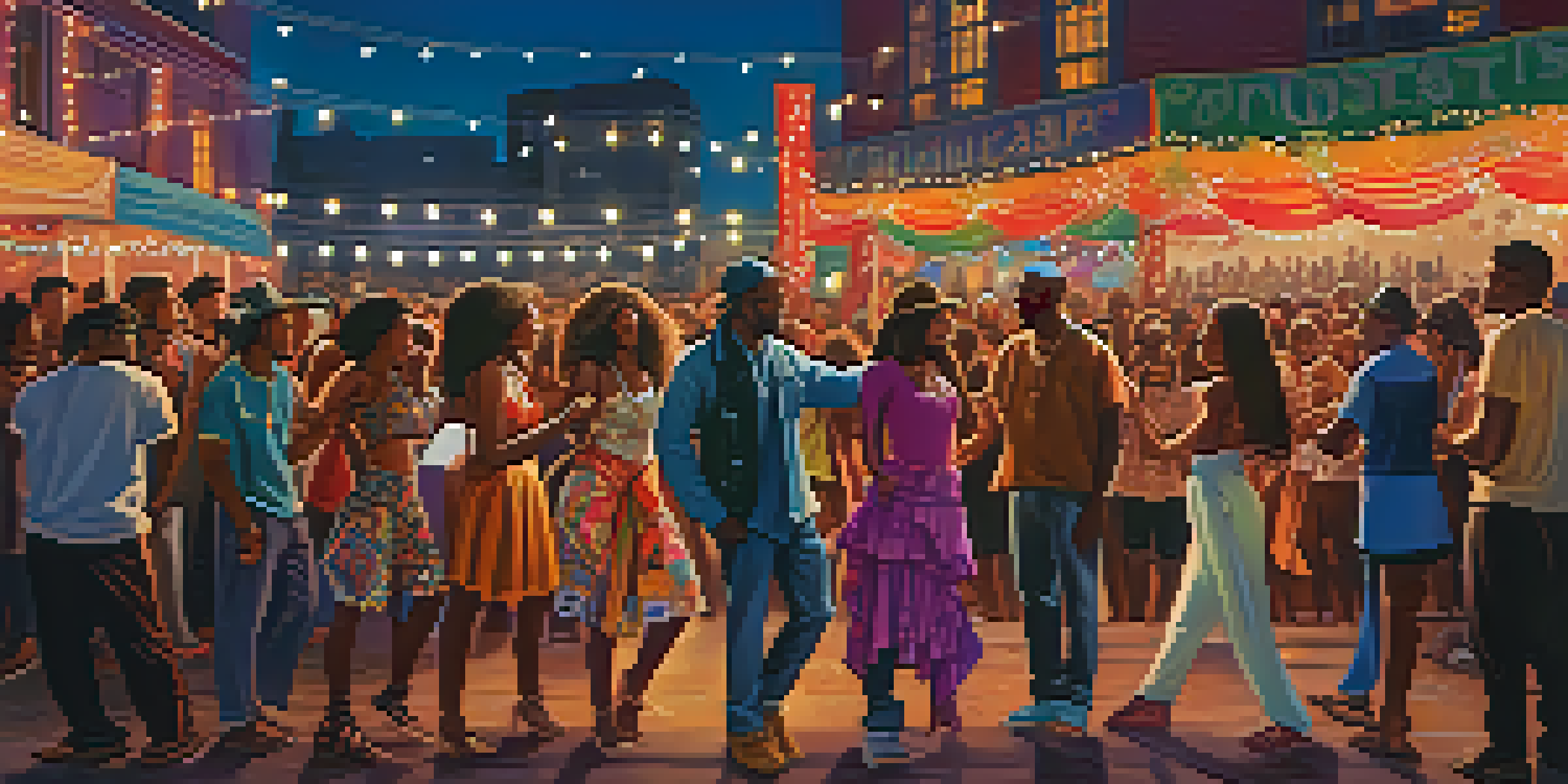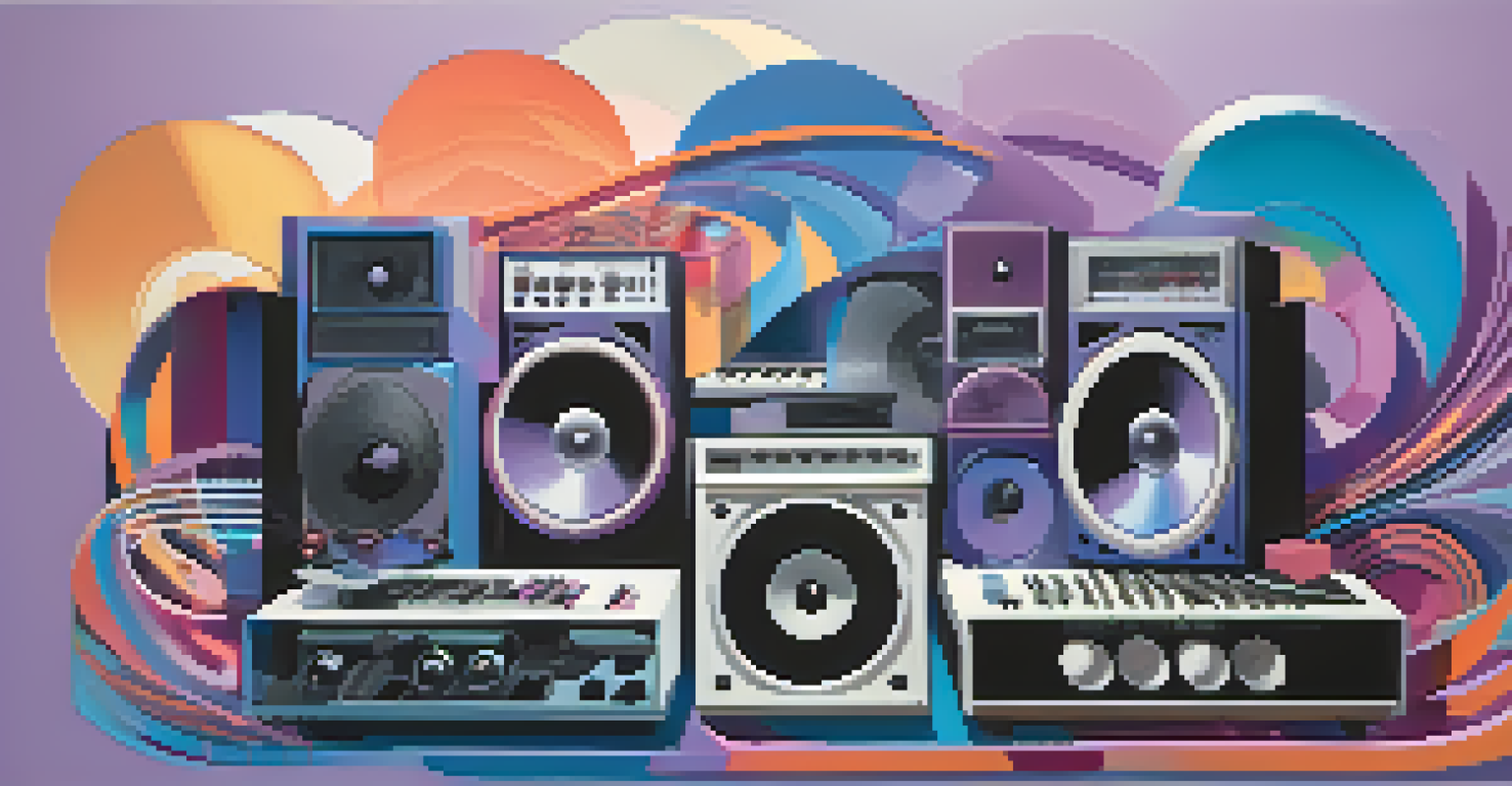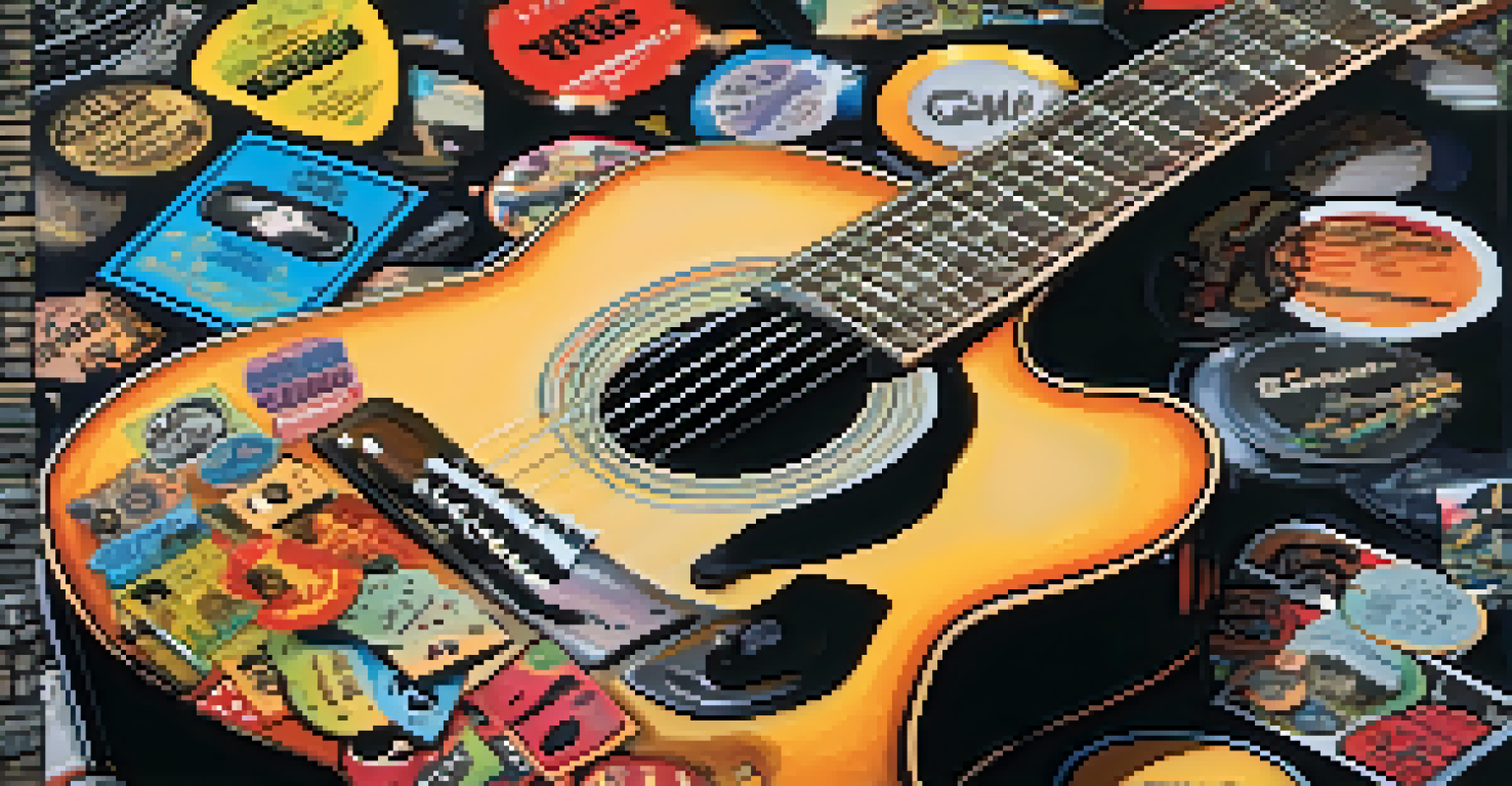Exploring Crossover Genres: A New Era in Music Innovation

What Are Crossover Genres and Why Do They Matter?
Crossover genres blend elements from two or more music styles, creating something fresh and exciting. Think about how country music has mingled with pop to give us hits like Lil Nas X's 'Old Town Road.' These genres matter because they break down traditional barriers, allowing artists to reach wider audiences and explore new creative territories.
Music is the shorthand of emotion.
In a world where streaming services dominate, listeners have access to a broader range of music than ever before. This accessibility encourages artists to experiment and merge genres, leading to innovative sounds that resonate with diverse crowds. For example, artists like Billie Eilish draw from pop, electronic, and indie influences, resulting in a unique sonic palette.
Crossover genres also reflect cultural shifts and societal changes, showcasing how interconnected our world has become. When artists collaborate across genres, they not only share their musical expertise but also their cultural backgrounds, creating a rich tapestry of sounds that speaks to our global society.
The Role of Technology in Genre Blending
Technology has been a game-changer in the music industry, enabling artists to experiment with different sounds and styles. Digital audio workstations (DAWs) allow musicians to mix and match elements from various genres seamlessly. This technology empowers creators to break the mold and innovate without the constraints of traditional recording methods.

Moreover, social media platforms serve as a launchpad for new crossover artists. TikTok, for instance, has given rise to viral trends that blend genres, making it easier for musicians to gain recognition. These platforms amplify the reach of new sounds, allowing listeners to discover and embrace music that they might not have encountered otherwise.
Crossover Genres Enhance Creativity
Crossover genres blend different music styles, allowing artists to innovate and reach broader audiences.
As technology continues to evolve, so will the opportunities for genre blending. Virtual reality concerts and AI-driven music creation tools are just the tip of the iceberg, suggesting that we’re on the brink of a significant transformation in how music is produced and consumed.
Iconic Crossover Artists Leading the Charge
Some artists have become icons of crossover genres, paving the way for others to follow. Think of artists like Drake, who effortlessly combines hip-hop with R&B and dancehall, or Post Malone, who fuses rock, hip-hop, and pop. Their success demonstrates that genre limitations are fading, allowing for more creativity in music.
Genre is a social construct that can be transformed and redefined over time.
These artists often inspire a new generation of musicians to explore their unique sound without fear of being confined to one genre. For example, Halsey blends pop with alternative and indie influences, drawing in fans from various musical backgrounds. This cross-pollination of styles encourages collaboration and experimentation.
Crossover artists not only shape trends but also influence the music industry’s landscape, demonstrating that versatility is key. As they continue to push boundaries, they open doors for emerging talents to explore their own hybrid styles, creating a rich, diverse music ecosystem.
Crossover Genres and Cultural Exchange
Crossover genres often serve as a medium for cultural exchange, reflecting the diverse backgrounds of artists. For instance, the fusion of Latin rhythms with hip-hop has given rise to reggaeton superstars like Bad Bunny, who not only blend genres but also introduce listeners to different cultural influences. This creates a richer experience for fans who get to enjoy and learn about new cultures through music.
By integrating various cultural elements, crossover artists can tackle important social themes, often addressing issues like identity, community, and belonging. This resonance with listeners can foster a deeper connection, as fans relate to the diverse experiences and stories shared through the music.
Technology Fuels Genre Blending
Advancements in technology and social media enable artists to experiment with sounds, promoting the rise of crossover music.
As crossover genres continue to evolve, they remind us of the power of music as a unifying force. They encourage appreciation for the diversity of sounds and styles, ultimately bridging gaps between cultures and communities.
The Impact of Crossover Genres on Mainstream Music
Crossover genres have significantly influenced mainstream music, reshaping what we hear on the radio and streaming platforms. As these genres gain popularity, record labels are increasingly eager to invest in artists who bring hybrid sounds to the forefront. This shift has opened the door for more unique and experimental music to thrive in the mainstream.
Take a look at the Billboard charts, where you’ll find a diverse range of crossover hits dominating the lists. Songs like 'Despacito' not only topped charts globally but also showcased how blending genres can create massive appeal. This trend encourages other artists to think outside the box, leading to a wealth of innovative music.
As crossover genres continue to make waves, they challenge traditional notions of what it means to be a successful artist. The ability to appeal to multiple demographics allows musicians to carve out their own unique niche, further diversifying the musical landscape.
Challenges Facing Crossover Artists
While crossover genres present exciting opportunities, they also come with their own set of challenges. Artists may struggle with identity, as they navigate the expectations of multiple fan bases. This pressure can lead to a fear of alienating certain groups, making it difficult for them to stay true to their artistic vision.
Moreover, the music industry can be slow to adapt to new trends, sometimes leaving crossover artists in a limbo. They might find it challenging to secure marketing support or radio play, as traditional platforms often favor more established genres. This can hinder their ability to reach wider audiences, despite their innovative sounds.
Crossover Artists Shape Mainstream Trends
Iconic crossover artists influence the music landscape, encouraging diversity and new musical expressions in mainstream music.
Despite these hurdles, many artists remain undeterred, pushing through the noise to create music that resonates with them. Their resilience highlights the importance of authenticity and creative expression, showing that the journey of innovation often comes with its own set of struggles.
The Future of Crossover Genres in Music
Looking ahead, the future of crossover genres in music seems bright and full of potential. As artists continue to explore new sounds and collaborations, we can expect to see even more innovative hybrids emerging. This evolution will likely be fueled by the rise of new technology and changing consumer preferences.
Additionally, the growing acceptance of genre fluidity among listeners means that artists are empowered to experiment without fear of being pigeonholed. As genres continue to blend, we may witness the birth of entirely new styles that redefine what music can be.

Ultimately, the future of crossover genres promises to be a dynamic and exciting landscape, where creativity knows no bounds. As we embrace these changes, we can look forward to discovering fresh sounds that challenge our perceptions and enrich our musical experiences.